The Harvest Moon rises on Tuesday 7 October 2025, marking the first of three supermoons visible before the end of the year.
But before that, the waxing Moon will approach and tango with the planet Saturn, making for a beautiful naked-eye sight you can enjoy all week.
And it starts on 1 October.
Get more stargazing advice by signing up to our e-newsletter and subscribing to our YouTube channel.

Saturn is currently at its best, having just passed opposition, which is when it's on the opposite side of Earth from the Sun.
And the Moon is approaching perigee, which is the point in its orbit when it's closest to Earth.
At the same time, Saturn and the Moon are sharing the same patch of sky.
Over the coming evenings, the Moon will get closer and closer to Saturn each night, the two eventually rising in the same location next to one other.
You won't want to miss this easy, beginner-friendly stargazing event. Here, we'll reveal exactly where you need to look and when, and what you'll see.
1 October

Tonight, the Moon is in its gibbous phase, when the Earth-facing side of the Moon is more than half-lit.
Over the coming evenings, the lit portion of the Moon will increase, culminating in the full Harvest Moon – a supermoon – rising on 7 October.
On 1 October, the gibbous Moon rises in the southeast in the early evening, making its way over to the south by the time the sky grows properly dark.
It's quite low down, so you may need a clear southern horizon in order to see it.
The Moon forms a 3-body alignment with bright stars Altair and Vega, stretching upwards from the horizon.
Altair is the lower of the two stars; Vega is higher and brighter.
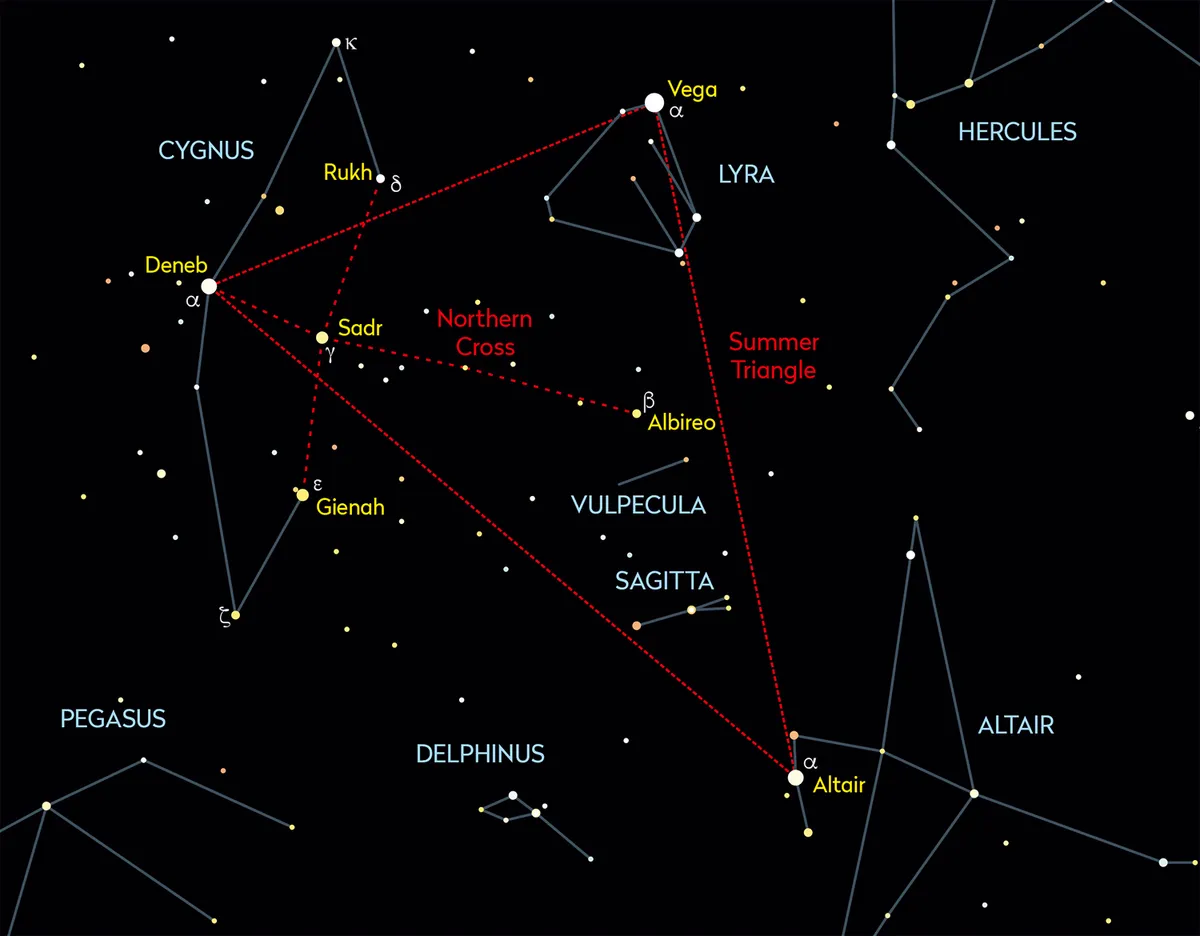
Altair, Vega and star Deneb form the Summer Triangle, a well-known star pattern, or asterism. See if you can spot all three and mark the triangle's location.
On 1 October, the Summer Triangle will look like an arrow pointing down towards the Moon.
When the Moon is in the south, around 8pm, look to the southeast and you'll see a bright 'star'. That's the planet Saturn.
Saturn has just passed opposition, which is the best time to see the planet.
Opposition is when a planet or other celestial body is on the opposite side to Earth from the Sun, meaning it's bright and well-positioned for observing in the night sky.
Saturn currently rises in the east around sunset and sets in the west before dawn, so it's visible all night.
Get out your binoculars or a telescope for a closer look at the ringed planet, and see if you can spot some of Saturn's brightest moons.
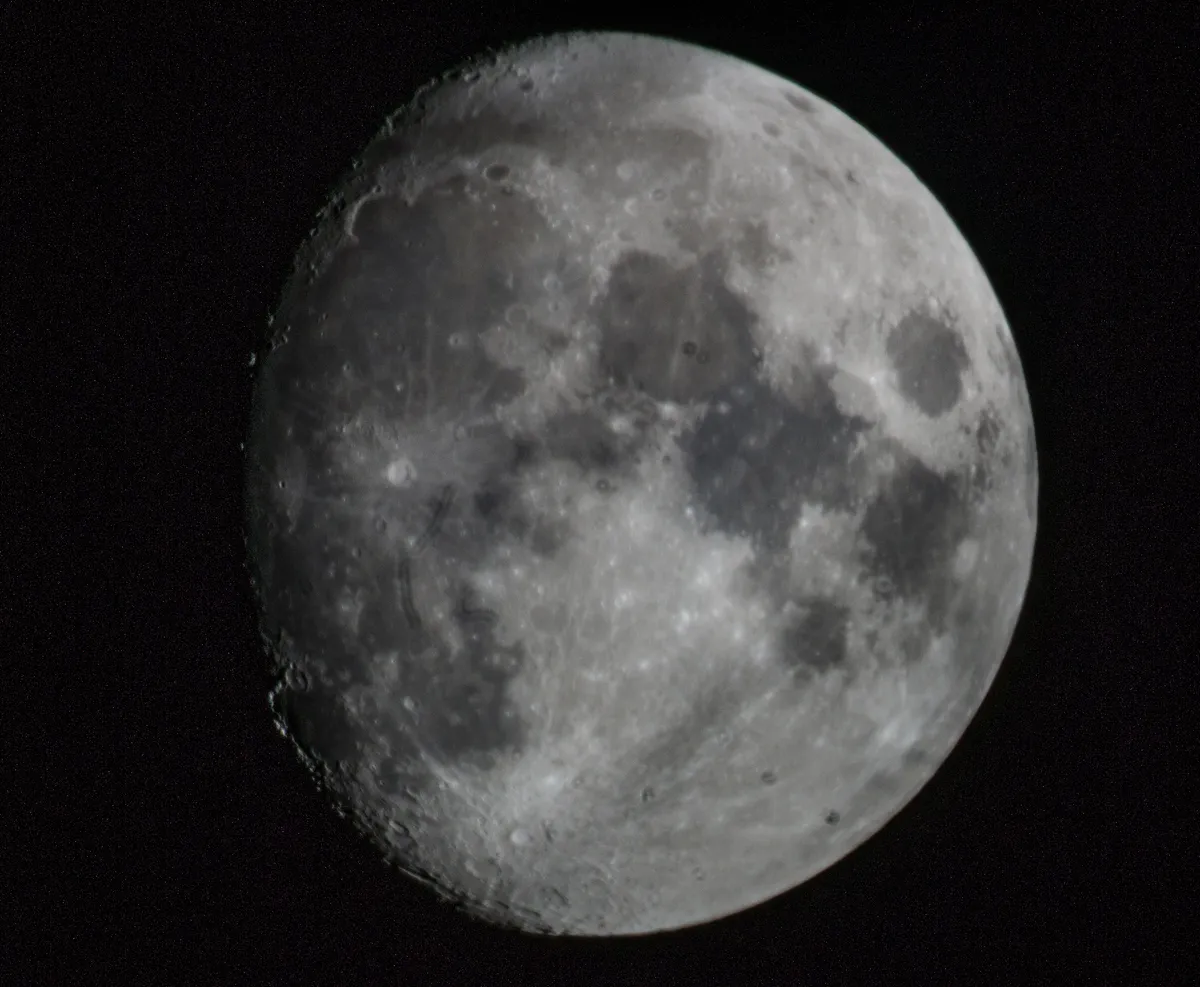
Then turn your binoculars or telescope to the Moon and explore the line where shadow meets the lit portion of the Moon. This line is known as the 'terminator'.
Along the terminator, light and shadow accentuate features like craters and mountains on the Moon
For more advice on what to observe on the lunar surface, read our pick of the best features to see on the Moon and the most underrated features to see on the Moon.
2 October
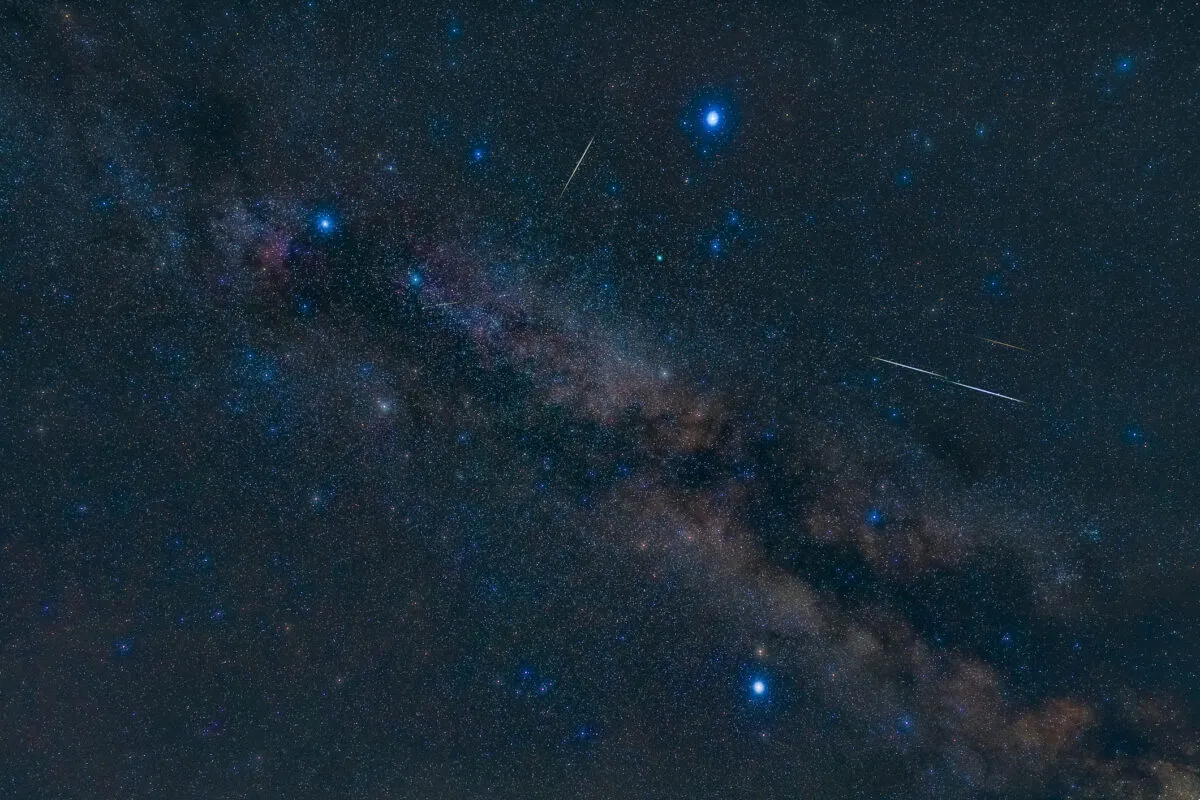
Step out tonight at the same time you did last night and look at the Moon. You'll notice it's moved slightly to the east (left).
The Moon tracks eastwards night after night, whereas stars and planets don't really change position to any obvious degree, from one night to the next.
That's why the Moon seems to hop across the sky throughout the course of a week, visiting different bodies as it does so.
Look again at the Summer Triangle. You'll see the 'arrow' it forms now no longer points directly at the Moon.
However, the imaginary line formed by the Moon, Altair and Vega now appears more straight.
And you'll notice the Moon is closer to Saturn than it was the night before.
Take another look at the Moon through your binoculars. The lit portion should be slightly greater than it was the previous night.
Can you see any craters or other features that you couldn't see last night?
3 October

Tonight the Earth-facing side of the Moon is even more illuminated than it was the night before before.
The Moon is now well on its way to becoming the full Moon that we'll see on 6/7 October.
Through binoculars or a telescope, you'll now have good views of two of the most prominent craters on the Moon.
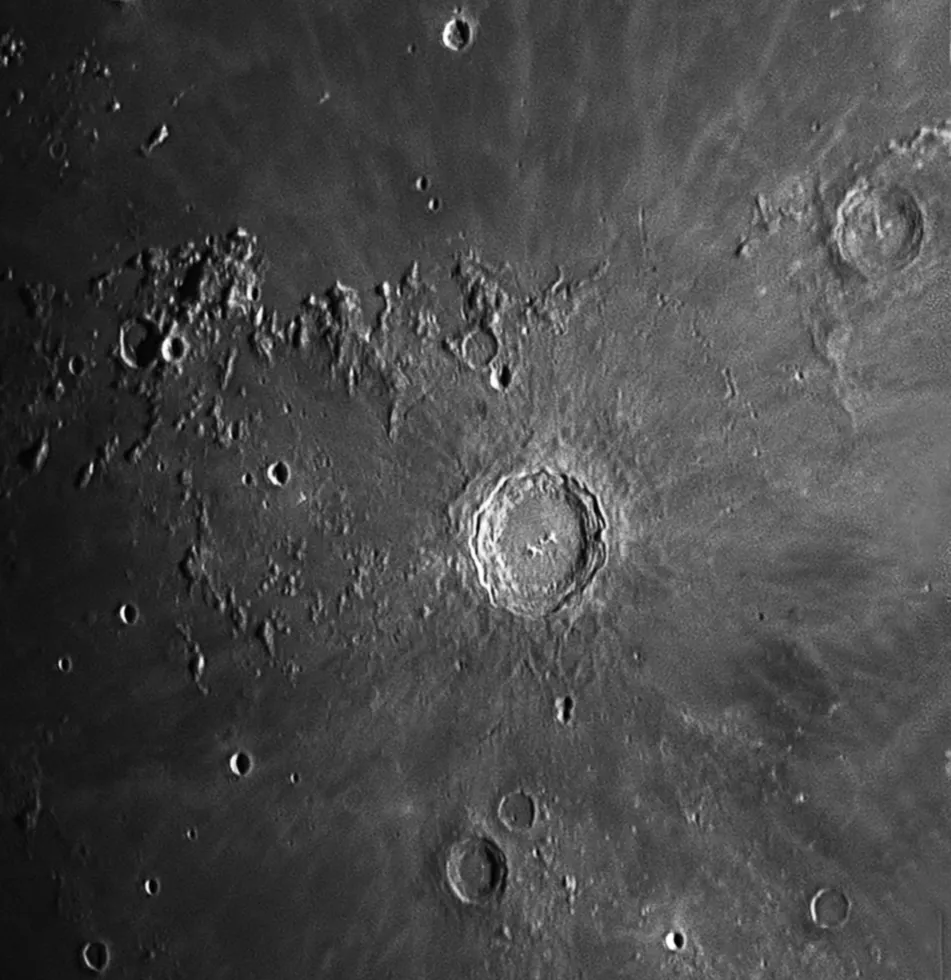
Crater Copernicus is the topmost of these two craters, located almost in the centre of the disc of the Moon, surrounded by dark material.
The bottom crater is Tycho, which is also one of the most famous craters on the Moon.
And you'll notice the Moon is much closer to Saturn: it's about halfway between Saturn and the bright star Altair.
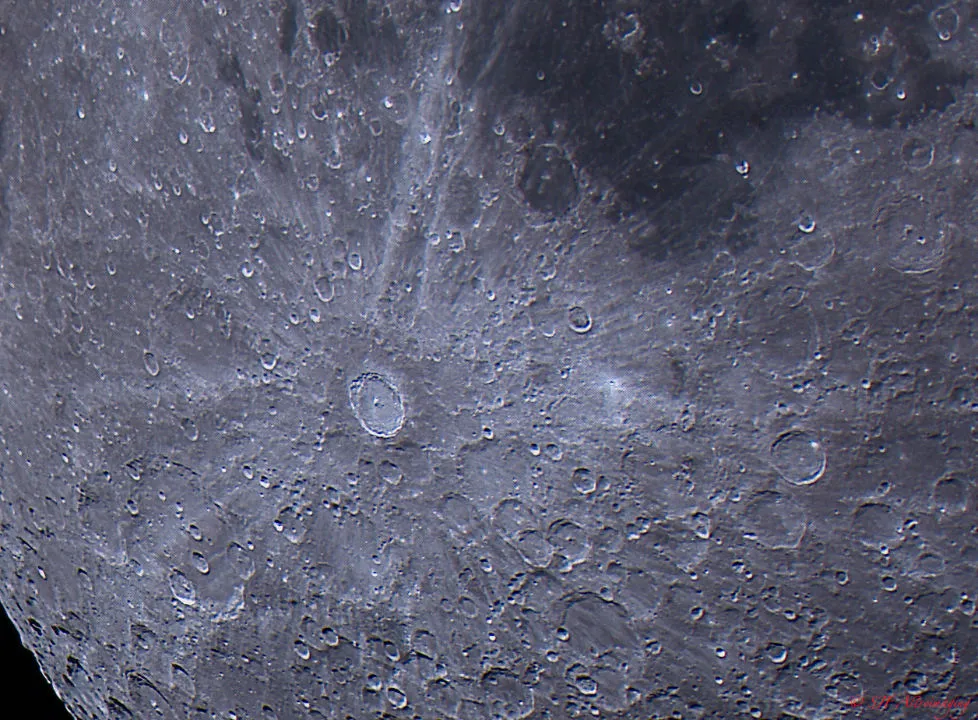
4 October
Think back to the start of October, when the Moon was in the south by the time the sky grew dark.
It should now be in the southeast at the same time, and is fuller, as well as being much closer to Saturn.
5 October

Tonight the Moon and Saturn rise in roughly the same location above the eastern horizon, and by the time darkness falls, they'll both be in the southeast.
Take a look at where Saturn is in relation to the Moon. Then take a look an hour or two later and notice where Saturn is now in relation to the Moon.
Have the two changed position relative to one another?
The Moon and Saturn's apparent close proximity to one another is a good lesson in how we perceive the night sky as a flat dome.
The Moon is an average of 384,400 km (238,855 miles) away, according to NASA, while Saturn is over 1 billion km away (just under 1 billion miles)!
That's why Saturn, even though it's about 35 times wider than the Moon, appears so much smaller. A reminder that, when it comes to stargazing, it's all about perspective.

6 October
The Moon is now further to the west (left) of Saturn, and is approaching its full phase.
In fact, the Moon is now virtually full, and this is the Harvest Moon for 2025.
The Harvest Moon is defined as the full Moon that's closest to the September equinox, which means sometimes the Harvest Moon is the September full Moon, and sometimes it's the October full Moon.
7 October

Tonight is officially 2025's Harvest Moon night, marking the first of three supermoons that will close out 2025.
See if you can spot the full Moon rising above the eastern horizon just as the Sun is setting.
Does it look enormous? If so, you're witnessing a well-known phenomenon known as the 'Moon illusion'.
This is the term used to describe how a low-down full Moon looks absolutely enormous, when in fact its apparent size in the sky isn't any bigger than when the Moon is higher up.
It's a matter of perspective, and likely caused by how enormous the Moon looks when it's next to foreground objects like tall buildings and trees.
As well as tonight's full Moon being the Harvest Moon, it's also the first of three supermoons in a row.

Supermoons explained
A supermoon occurs because the Moon's orbit around Earth isn't a perfect circle.
Instead, the Moon's orbit is elliptical, or egg-shaped, so sometimes it's closer to Earth than at other times.
When it's closest to Earth, it's known as perigee; when it's furthest from Earth, it's apogee.
And three or more celestial objects in a line is known as 'syzygy', so the true astronomical definition of a 'supermoon' is a 'perigee syzygy Moon'.
In reality, a supermoon won't really appear much bigger than a 'regular' full Moon.

Ignore any claims that a supermoon makes the full Moon look huge. You're unlikely to notice the difference between a supermoon and a 'regular' full Moon the month before it.
But there's a point to note around the Moon illusion and the supermoon.
The Moon's apparent enormity under these conditions isn't anything to do with it being a supermoon, but is instead a result of the Moon illusion.
If you do notice the Moon close to the horizon and it does look massive, some observers may be tempted to suggest the Moon looks huge because it's a supermoon.
Keep watching the Moon
As the month progresses, we'll see the Moon continue to track eastwards, but it will rise later and later each evening, until it's not really visible until after midnight.
However, that means that, from 10–14 October, the Moon will be tracking across the Orion constellation and having a close meeting with Jupiter on 13/14 October.
The Moon is now also waning, approaching its new Moon phase, which is when it's on the same side of Earth as the Sun, and therefore not visible.
The next supermoon rises on 5 November 2025.
If you observe or photograph the Moon and Saturn or the Harvest Moon supermoon, share your observations and images with us by emailing contactus@skyatnightmagazine.com

